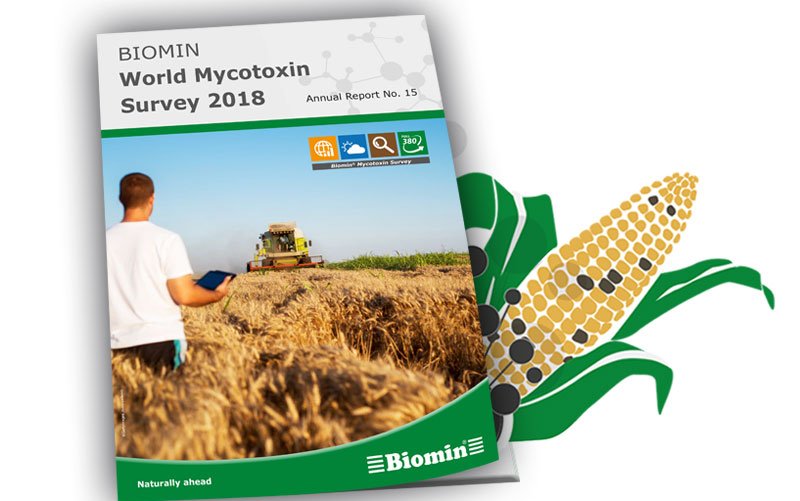The new 2018 Mycotoxin Survey Report reveals impacts of the main mycotoxins. In the last years, fumonisins were globally the most prevalent mycotoxins. Also in 2018 they claim their position and were highly abundant at high concentrations in raw commodities.
This conclusion emerged from more than 81936 analyses conducted on 18424 finished feed and raw commodity samples sourced from 79 countries from January to December 2018.
Some report highlights are:
- Co-contamination occurs frequently. 70% of all samples (analyzed for at least two mycotoxins) contained more than one mycotoxin.
- From 2017 to 2018, risk in South and South East Asia increased from severe to extreme. Risk is mainly based on occurrence of aflafoxins and fumonisins.
- In North America, deoxynivalenol is the most prevalent mycotoxin.
- Deoxynivalenol is also the most abundant mycotoxin in Europe.
- Risk in South and Central America is mainly based on the occurrence of fumonisins but also deoxynivalenol, which is very prevalent in cereals.
- In Africa, deoxynivalenol is very abundant, particularly in corn.
- Corn samples from Middle East were to 100% contaminated with fumonisins with an average concentration of 3101 ppb.
- More than 691 samples had been analyzed with the Spectrum 380 method. The results show a high prevalence of emerging mycotoxins. Aurofusarin, moniliformin, enniatin and more were frequently found.
Read full report here.








